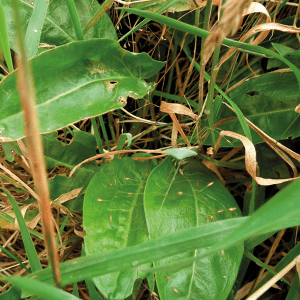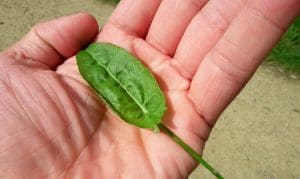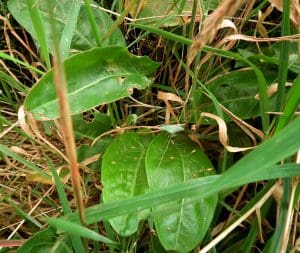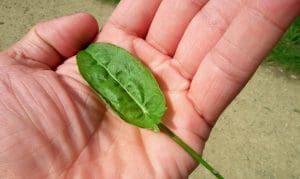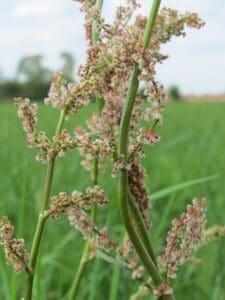Common Sorrel / Spring / Summer / Autumn / Winter / Edible
Common Names
Common Sorell, Garden sorrel, Spinach dock, narrow-leaved dock
Botanical Name
Rumex acetosa
Scientific Classification
Kingdom – Plantae
Order –Caryophyllales
Family – Polygonaceae
Physical Characteristics for Common Sorell
This perennial can reach a full height of 50cm however it is often found being much smaller.
Leaves
The arrow shaped leaves, from 2-6cm are smooth with sharp tails at its base, they grow from one central spot giving a rosette of approx. 15-30cm.
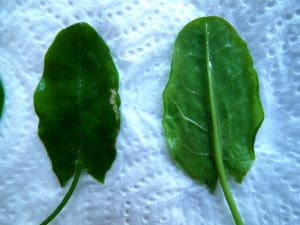
Stem
If allowed to grow the plant will shoot a reddish upright stem from its centre, up to 50cm long.
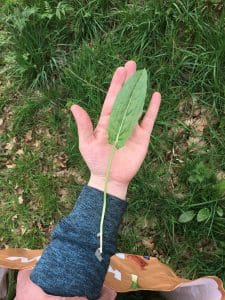
Flowers & Seeds
Up the stem there will be yellowish or reddish flowers, minute and look very similar to the seeds which are red in colour.
Habitat
Open grassland and lawns
Known Hazards
This plant contains Oxalic acid, similar to rhubarb, giving it its’ sour taste, if you ingest too much of this acid you can upset your stomach. Saying that, you would have to eat a serious amount of common sorrel to get to this point. To be avoided by anyone with kidney disease, kidney stones, rheumatoid arthritis, or gout, or those taking blood thinners.
Could be Confused with
Has the potential to be confused with Lords and Ladies (Arum maculatum), which also holds a strongly arrow shaped leaf, however lords and ladies is often found in woodlands, is much darker green in colour, has deep veins and is generally much larger in size.
Edible Uses
Leaves: Edible salads, sauces, smoothies, juiced, cakes, icing
Flower: All of the above
Why not check out our favourite Sorell recipes.
Notes on Herbal uses
It’s a diuretic and has antiscorbutic properties as well has having a great cooling ability. It’s been used to calm stomach upsets.
Extra notes from the Foragers
Traditionally, the juice of common sorrel was used to remove stains from linen.
Herbal
It’s a diuretic and has antiscorbutic properties as well has having a great cooling ability. It’s been used to calm stomach upsets.



